On View
Saved From Destruction, J.M.W. Turner’s House Reopens After $3.5 Million Renovation
The historic home was in dire need of repair.
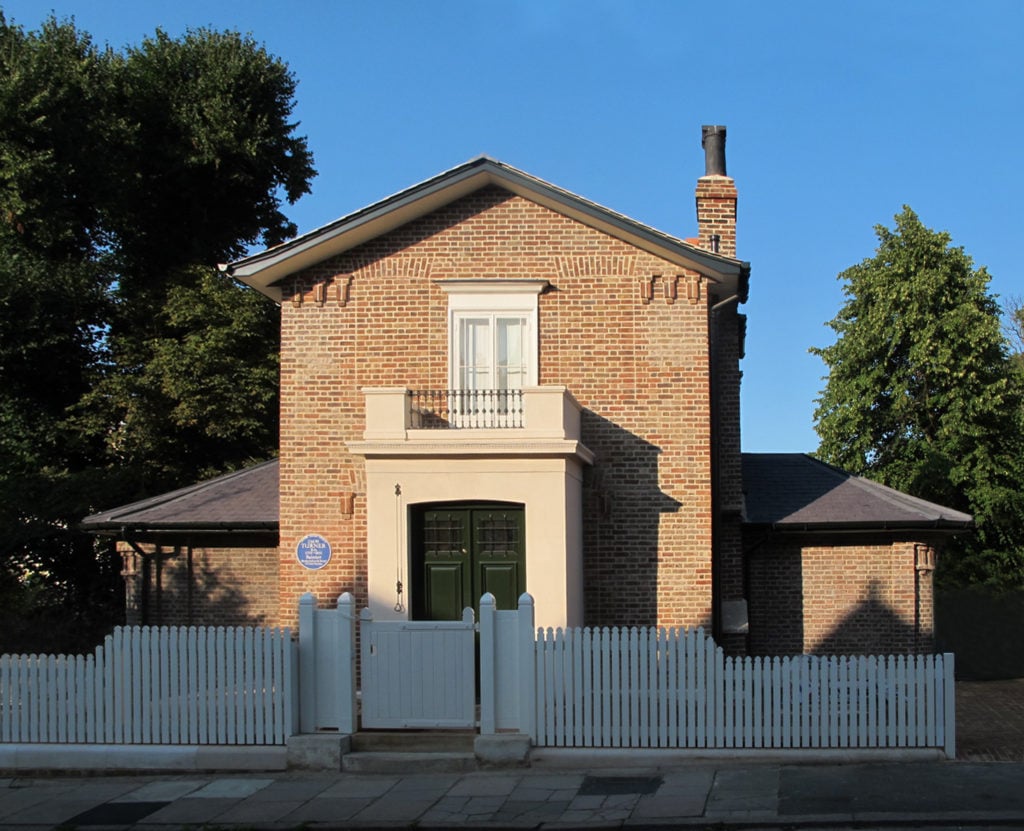
The historic home was in dire need of repair.

Sarah Cascone

Restored to its former glory, the home of British landscape painter J.M.W. Turner is once again open to the public, offering art lovers a chance to visit the only extant building designed by the renowned artist.
Sandycombe Lodge, today located in Twickenham, West London, was originally conceived of as a country retreat for the artist and his father in the then-rural area back in 1813. Turner had studied architectural drawing as a young man. “He always had what you might call an eye for buildings,” said Catherine Parry-Wingfield, chair of the Turner House Trust, to artnet News, noting that designing a home of his own was the fulfillment of a long-held dream. “There are about 40 drawings of this house.”
Unsurprisingly, it was the surrounding landscape, overlooking the Thames, that attracted Turner to the property, said Parry-Wingfield, noting that “he would have had lovely views.” It only seems fitting that one of art history’s greatest landscape painters would have felt compelled to own a piece of it for himself.
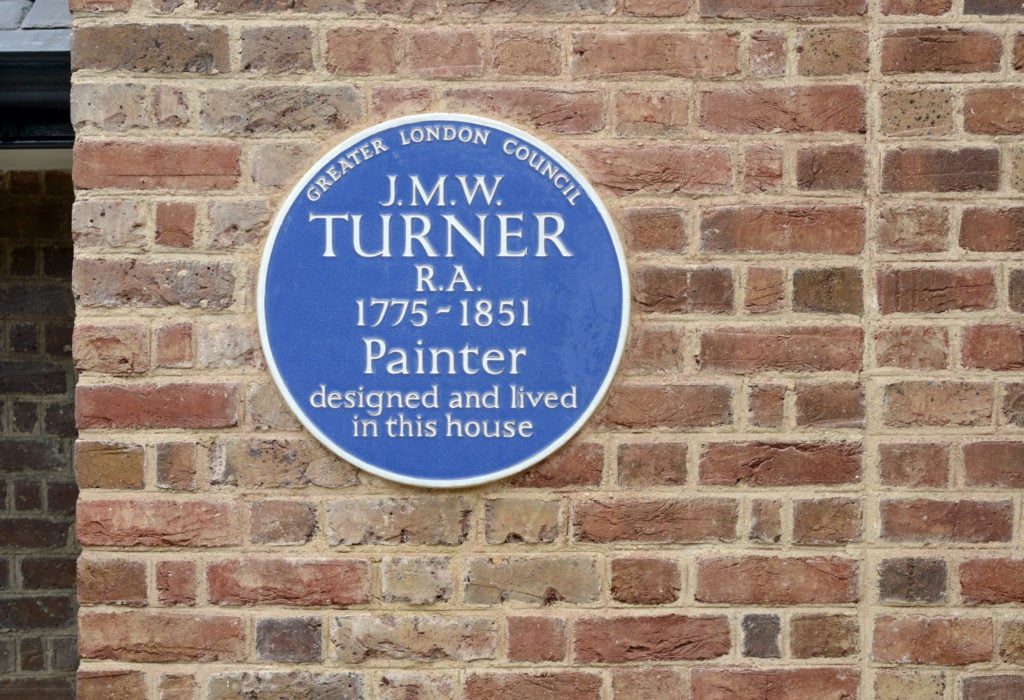
J.M.W. Turner’s Sandycombe House. Courtesy of Anne Purkiss/Turner’s House Trust.
Turner sold the house in 1826, and it passed into the hands of several owners before being purchased in 1947 by Harold Livermore, a professor of Spanish history. He set up a trust for the property in 2005, and bequeathed Sandycombe Lodge to the Turner House Trust when he died five years later at 95.
Parry-Wingfield, an art historian, got involved by happenstance. “It happened when I got talking to Professor Livermore in a queue at the local post office,” she recalled. “He said he wanted to leave the house to the nation and the nation didn’t want it!”
Though the property was a generous gift, Sandycombe was in dire need of repair. They could only open it to the public one afternoon a week.
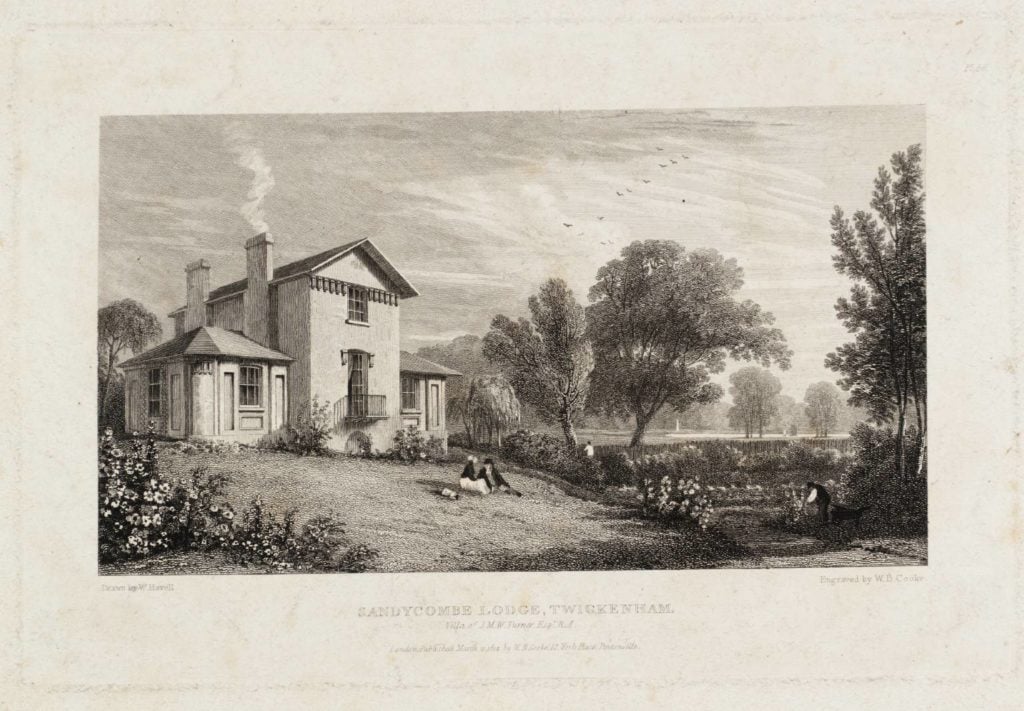
Sandycombe Lodge, Twickenham, Villa of J.M.W. Turner, engraved by W.B. Cooke published 1814 William Havell. Courtesy of the Tate.
“We had some exceptionally wet weather almost as soon as we became the owners,” said Parry-Wingfield. “I think five sections of ceiling collapsed—I can remember standing there when the first piece of ceiling came down and thinking ‘I have no idea what I’m going to do!'”
In 2013, the home was placed on Historic England’s Register of Buildings at Risk, making a major conservation project all the more a necessity. The restoration of the building was announced in January 2015, with Heritage Lottery Fund allotting £1.4 million ($1.8 million) towards the project.
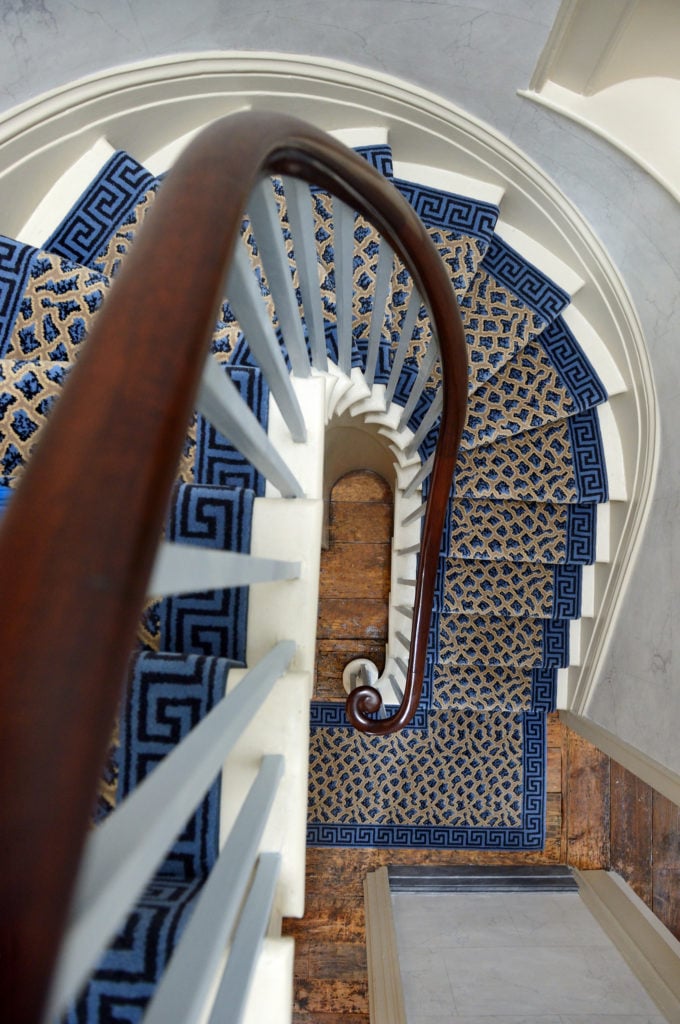
The staircase of J.M.W. Turner’s Sandycombe House after renovations. Courtesy of Anne Purkiss/Turner’s House Trust.
A successful fundraising campaign raised the rest of the £2.4 million ($3.5 million) needed to complete the ambitious restoration. “It’s been a long project,” said Parry-Wingfield.
The Turner House Trust has done its best to return the home to how it would have looked during the artist’s residency, taking down a Victorian-era addition and modern-day alterations. The brick wall around the garden has been swapped out for a picket fence. The house is now much smaller, and, after 150 years of white paint, the building has been stripped clean, revealing the original brick facade.
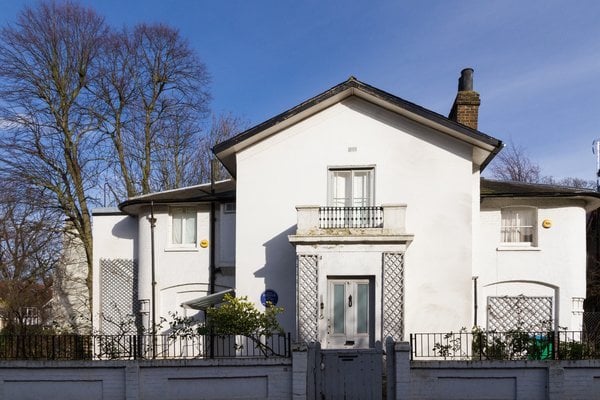
J.M.W. Turner’s Sandycombe Lodge before renovations. Courtesy of the Turner House Trust.
“The first real surprise occurred once we took down the ceiling of the rooms in the raised wings, revealing the original flank walls of the main block of the house, which has remained hidden for almost 200 years,” said conservation architect Gary Butler of Butler Hegarty Architects in a statement, describing the multicolored brick walls he uncovered.
During the course of the work, the Turner House Trust also discovered a scrap of wallpaper that dated to Turner’s time in the home. The full design has been recreated by Robert Weston, and now graces the walls of the large bedroom. There has also been an effort to return other rooms to their original colors or the best contemporary approximation, thanks to analysis by paint historian Helen Hughes.
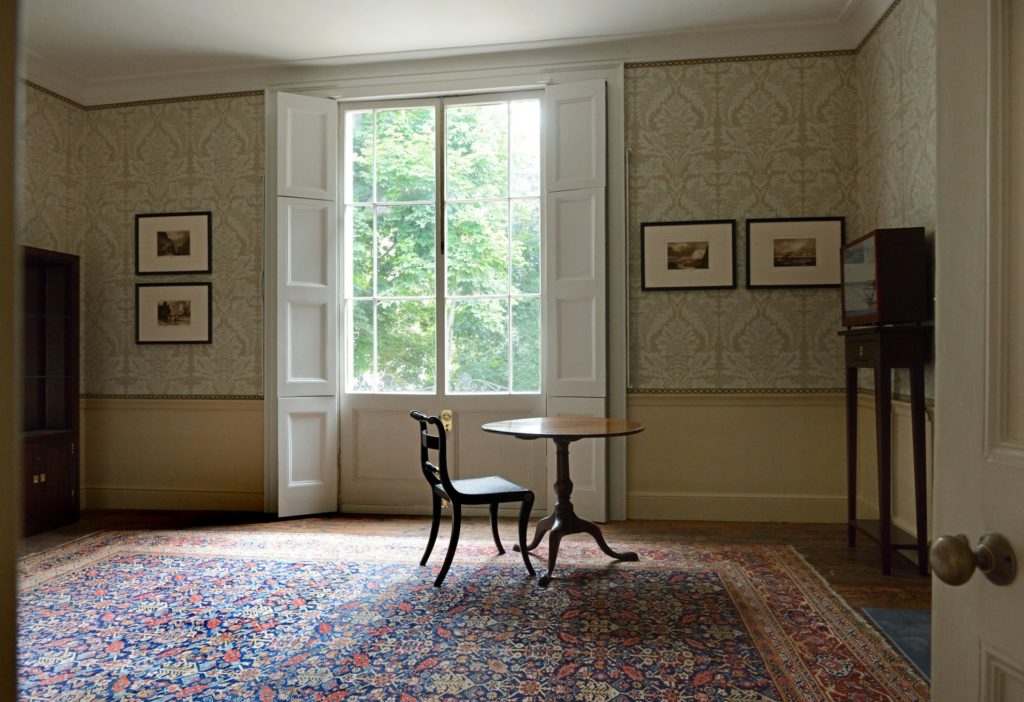
The sitting room of J.M.W. Turner’s Sandycombe House after renovations. Courtesy of Anne Purkiss/Turner’s House Trust.
To furnish the home, Parry-Wingfield turned to the inventory of Turner’s London home, taken after his death in 1851. “We looked for objects in the list that sounded old-fashioned,” she explained. Based on their findings, she went shopping for late Georgian furniture, keeping in mind that “we really don’t think they lived very grandly at all.”
Several of Turner’s prints are also on display, from Livermore’s collection. Of particular note are those depicting naval battles from the Napoleonic Wars, fought during the period that the artist was living at Sandycombe, unable to travel in Europe. The trust has paired these with contemporary recreations of Turner’s models of French ships, produced by French prisoners of war in England.
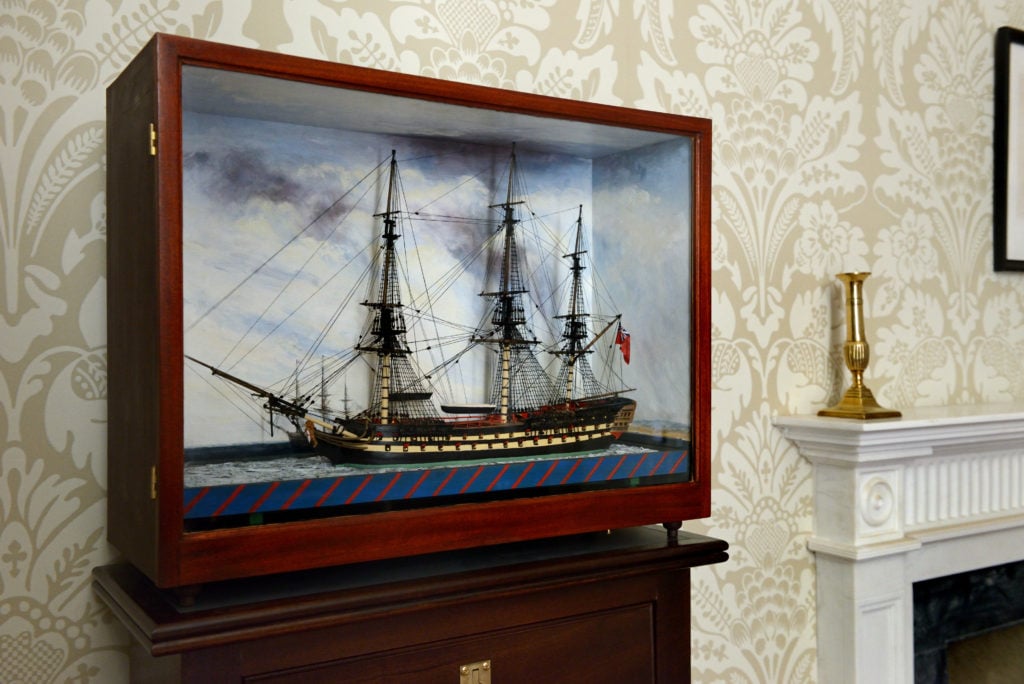
Kelvin Thatcher created this model of a French ship from the Napoleonic Wars similar to those owned by J.M.W. Turner, for display at the artist’s Sandycombe House. Courtesy of Anne Purkiss/Turner’s House Trust.
“He would have used them when he was sketching out a big sea painting,” said Parry-Wingfield, noting that the originals belong to Tate Britain. “They’re artist props.”
The trust has also carried out archaeological digs on the garden outside the property, although there haven’t been any major finds of yet. Turner originally owned much of the surrounding land, so Parry-Wingfield is encouraging the neighbors to come forward if they’ve found anything that the artist might have left behind.
“Places where very famous and successful creative people have lived are always absolutely fascinating,” Parry-Wingfield added. “When those persons have actually designed the building themselves, that makes it even more exceptional.”